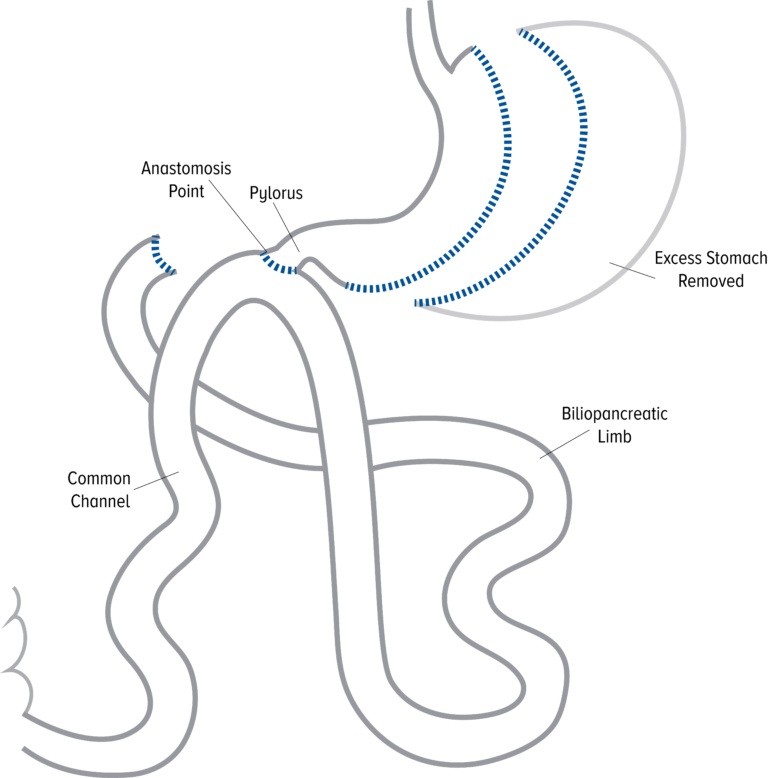Search for a Bariatric Surgeon
SearchInformation Sessions
Information SessionsSchedule an Appointment
ScheduleThinking About Bariatric Surgery? Let Us Help
Get Started on the Path to Bariatric Surgery
Get StartedRefer a Patient
ReferSingle Anastomosis Duodenal Switch
Over the last few years, the single anastomosis duodenal switch, a less invasive, modified version of the duodenal switch, has become an option. It is also sometimes referred to as SADS, SIPS, SADI, SADI-S, or Loop DS procedure.
The ideal patient for a single anastomosis duodenal switch has more weight to lose, particularly patients with a BMI over 50. Additional benefits are a lower incidence of ulcers than a gastric bypass operation. This is particularly helpful for patients that need to take NSAIDs such as aspirin, ibuprofen, etc.
Highlights
- Greatest weight loss potential of all bariatric procedures
- Minimal risk of dumping syndrome
- Excellent diabetes control
- Minimal risk of ulcer disease
- Lower risk of bowel obstruction compared to the duodenal switch

What to Expect
The single anastomosis duodenal switch works by creating a sleeve gastrectomy for restriction and hunger control. After the sleeve, the intestines are rerouted similar to a gastric bypass.
Instead of using two connections as in the Roux-en-Y gastric bypass or the more traditional duodenal switch, a single connection is madein a loop configuration. By having one connection instead of two, the surgery is performed more quickly and with less risk of leak.
First, the sleeve is created with a surgical stapler along the outside curve of the stomach. After the new stomach is created, the excess stomach is removed. The valve at the outlet of the stomach remains, which allows for the normal process of stomach-emptying and the feeling of fullness. The small intestine is carefully counted from the base of the large intestine and then looped and reconnected to the stomach.
Surgery takes about an hour and a half and patients have a similar recovery to other bariatric procedures. Food enters the sleeve and is held there with the pylorus just like a sleeve. Because of this, dumping syndrome does not occur, unlike the gastric bypass.
SA-Duodenal Switch from Jamie Bull on Vimeo.
Results
Patients can expect to lose 70 to 80 percent of excess weight in the first year after a duodenal switch operation. Results vary by patient.
Potential Concerns
In addition to standard surgical risks, concerns to be aware of include:
- Increased risk of reflux disease
- Greater risk of nutrition deficiencies if patient is not compliant with recommendations
- Nausea and vomiting
- Leaks from staple line
- Gastric reflux
- Small bowel obstruction
What to Expect After Surgery
A hospital stay after a SADS procedure is typically 24 to 48 hours. Many patients return to normal activity within one to two weeks. Heavy lifting is restricted for about four weeks.